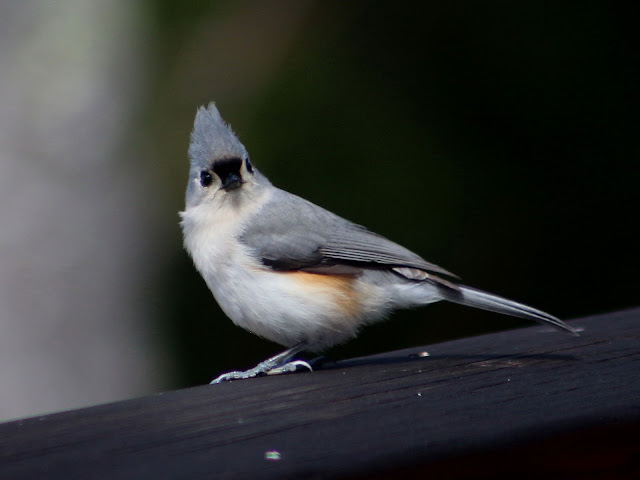 |
| First wildflower buds of the season |
 |
| Trailing Arbutus (Epigaea repens), also known as Mayflower |
Little Canada Mayflower stalks are starting to push their way up through last fall's leaf litter, even in the most improbable spots.
 |
| Canada Mayflower (Maianthemum canadense) also known as false-lily-of-the-valley. Confusing, isn't it? |
Soon the forest floor will be speckled with green shoots.
Even the Red Oak seeds are emerging from their cradle, reaching a toe out to test the soil, revealing their true colors even at this early stage.
 |
| A Red Oak is born |
It's a wonder of nature that some day such a tiny seed will become a majestic oak.
 |
| A pair of Red Oaks along the Blue Trail in the Hamlin conservation area |
Most of the Red Maple flowers are gone now and they are starting to push out miniature leaves, as are the Black Cherry trees.
 |
| Black Cherry leaves, and fruit in its early form |
Allergy lovers, of course, already know this.
I witnessed a couple of displays of aerial acrobatics this week as crows defended their nests. First I saw one crow attacking another that was just sitting in the top of an oak tree.
The attacker would fly away and circle up to gather energy for a bombing run. As it dove down at the tree-sitter, the target would raise its sharp beak and let a out a loud "caaaw" and the bomber would make a close approach at high speed, then bank hard and swing away for another strafing run.
 |
| A crow protecting its territory |
This went on for several minutes - I shared a couple of videos on YouTube:
Crow Acrobatics Bombing Run
Another day I saw a small bird chasing a larger bird and thought it was one of the smaller birds such as a blue jay or a black bird harassing a crow. (This is known as "mobbing": when smaller birds harass a larger bird to protect their nesting territory. Crows for example, are known robbers of young hatchlings from smaller bird's nests.) But with binoculars I immediately saw it was a crow going after a Bald Eagle. The eagle flew to the shoreline and found a protected branch on a white pine to land, and the crow went on its way.
 |
| The Eagle protected from its smaller antagonist |
I know there are crow nests in this area, as when walking nearby the crows put up an awful racket when I'm in the vicinity of their nest tree. They know eagles love to raid their offspring just as much as the crows love to raid those of smaller birds. It doesn't matter if you are the largest creature in the forest; it won't make you invulnerable to less powerful nations who will fight tirelessly to protect their country.
Soon the next bird generation will be hatching out to join with all the other new life that makes up the rebirth of New England year after year.
Postscript: As you drive the roads in Meredith in the coming weeks, take note how good the roadsides look. A team of generous volunteers spent their Saturday morning picking up trash along the town's roads. The event was organized and sponsored by Dave Kutcher and DAK Financial Group in Meredith. Next time you're down town, stop by to say thank you to Dave and his team. Many thanks all the wonderful people who participated, including employees of Meredith's DPW who took away the mountain of trash collected. It really makes a difference in how our town looks!


















































